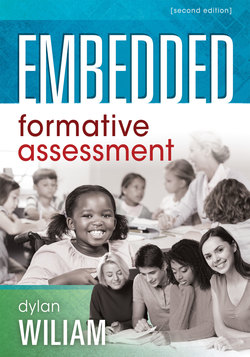Embedded Formative Assessment

Реклама. ООО «ЛитРес», ИНН: 7719571260.
Оглавление
Dylan Wiliam. Embedded Formative Assessment
Отрывок из книги
EMBEDDED formative assessment
second edition
.....
As noted previously, for many years, researchers and politicians assumed that one teacher was as good as another, providing each was adequately qualified for the job. However, in 1996, William Sanders and June Rivers published a paper based on an analysis of three million records on the achievement of Tennessee’s entire student population from second to eighth grade. Because of the way they collected the data, it was possible to track the progress each individual student made and match that to the teacher who had been teaching them each year. They found that there were differences in how much students learned with different teachers, and that these differences were large. To show how large the differences were, they classified the teachers into five equally sized groups based on how much progress their students had made (low, below average, average, above average, and high). They then examined how an average eight-year-old student would fare, depending on what teachers he or she got. What they found was rather surprising. A student who started second grade at the 50th percentile of achievement would end up at the 90th percentile of achievement after three years with a high-performing teacher but, if assigned to the classes of low-performing teachers for three years, would end up at the 37th percentile of achievement—a difference of over 50 percentile points. They found that increases in teacher quality were most beneficial for lower-achieving students, and the general effects were the same for students from different ethnic backgrounds (Sanders & Rivers, 1996).
Subsequent studies (for example, Rivkin, Hanushek, & Kain, 2005; Rockoff, 2004) confirmed the link between teacher quality and student progress on standardized tests. While different studies have found slightly different results, there is now a clear consensus among researchers that the correlation between teacher quality and student progress is at least 0.1, and may be over 0.2, especially for mathematics, as the data in table 1.1 clearly indicate. A correlation of 0.1 would mean that if a student was taught by an above-average teacher (for example, a teacher who is one standard deviation above the mean), then that student would make 0.1 standard deviations’ more progress in a year than a student taught by an average teacher. Since for most students in these studies, one year’s progress is around 0.4 standard deviations, this would equate to a 25 percent increase in the rate of learning.
.....